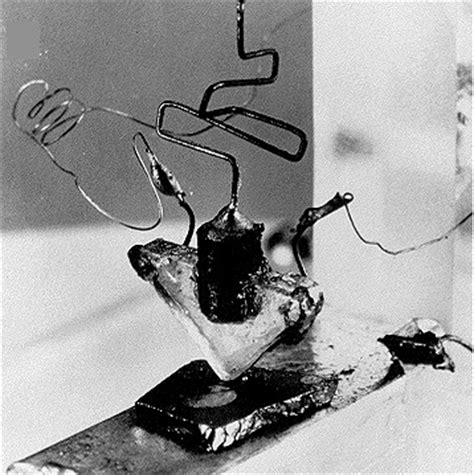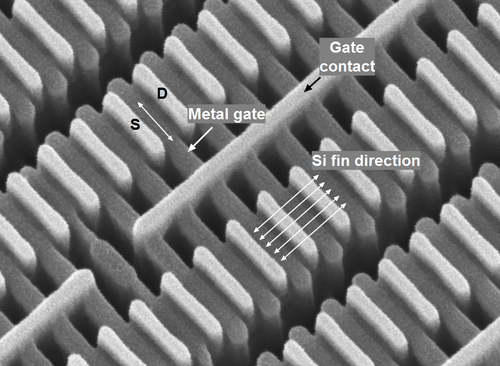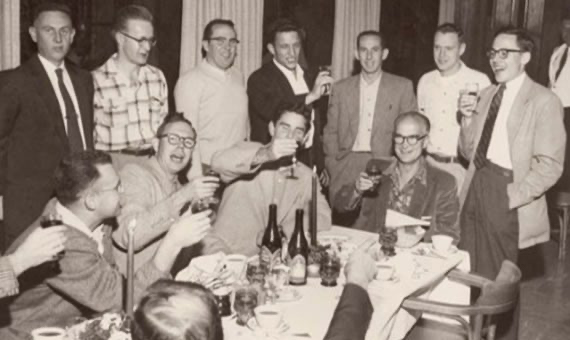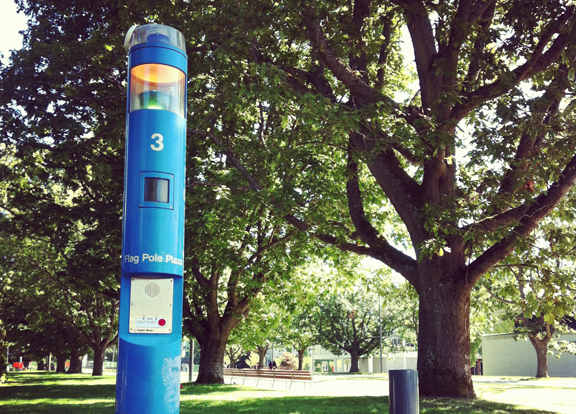SCIE 113 Case Study: The Invention (or Discovery) of the Transistor
Transistor:
1945 — 1956
Figure 1: William Shockley (seated at the head of the table) celebrating his Nobel Prize victory at Shockley Semiconductors.
The Path of Discovery of Transistor



See the text for some explanation of these terms. Compare with the palm-sized original transistor in Fig. 5.
Basic Principles of Transistor

A schematic of a MOSFET transistor. (Left) A p-type substrate with two pockets of n-type material around the Source (S) and Drain (D) connection terminals. There is no positive voltage applied to the Gate (G), and so no electrons to gather at the surface between the source and the drain. (Right) When even a small voltage is applied to the Gate, electrons in the substrate are attracted to it, creating a local excess of electrons near the surface. A thin insulating plate separates the gate from the substrate and does not allow the charges to reach each other. This narrow n-type channel connecting the source and the drain allows current to flow.
Willian Shockley & “Traitorous Eight”
Traitorous Eight
Julius Blank, Victor Grinich, Jean Hoerni, Gene Kleiner, Jay Last, Gordon Moore, Robert Noyce, and Sheldon Roberts
With William Shockley’s difficult managerial style, the traitorous eight was a group of eight employees who left Shockley Semiconductor Laboratory in 1957 to found Fairchild Semiconductor.

Present Day and Future Transistors

Intel
The Biggest CPU Manufacture
AMD
The Main Competitor of Intel

Fairchild Semiconductor
The Precursor of Intel & AMD

Claims

“Credit for our advanced way of life must go to science and scientific progress.”
“Scientific theories are based on previous knowledge. They help researchers to plan their investigations. “


“Scientific questions, methods, and results are always influenced by politics and culture. “
“Fierce competition causes scientists to act in secrecy and lift ideas from other scientists.”


“Earning recognition from other scientists is the central motivator for scientists.”
References
Fomichev, S. (2021, September). The invention (or discovery) of the transistor [Course material from the Sci113]. Canvas. https://canvas.ubc.ca/







4 responses to “SCIE 113 Case Study: The Invention (or Discovery) of the Transistor”
What’s up, all the time i used to check website posts here
early in the morning, for the reason that i love to find out more and more.
Amazing! Its in fact awesome piece of writing, I have got much clear idea on the topic of from
this post.
Thanks for finally talking about >SCIE 113 Case Study: The Invention (or
Discovery) of tthe Transistor – AllenCheng.Blog <Loved it!
Thank you for writing this post!